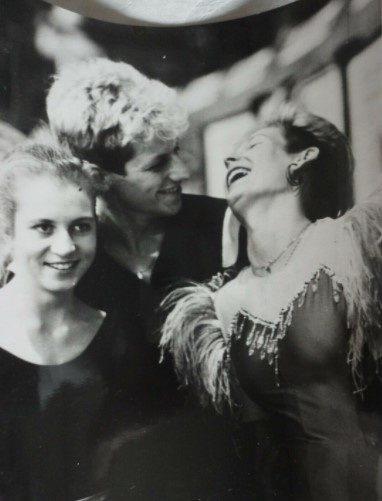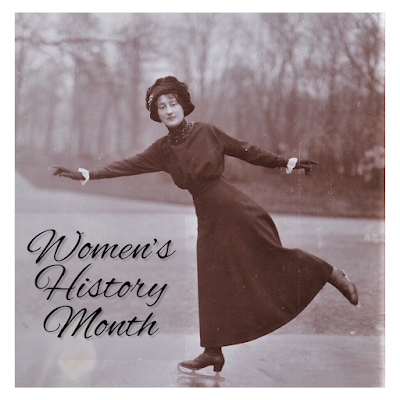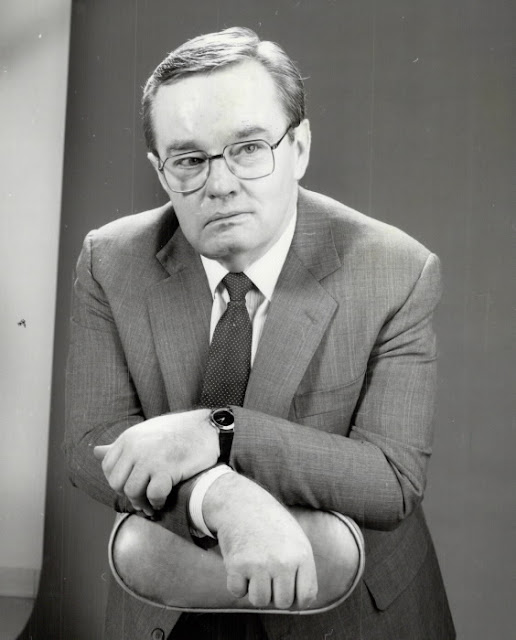|
Year |
Men |
Women |
Pairs |
Ice Dance |
|
1928 |
Montgomery Wilson |
Edel Randem |
Kathleen Lovett and A. Proctor Burman |
N/A |
|
1932 |
(none) |
Elizabeth Fisher |
(none) |
N/A |
|
1936 |
Erle Reiter |
Angela Anderes |
Irina Timcic and Alfred Eisenbeisser-Ferraru |
N/A |
|
1948 |
Zdeněk Fikar |
Dagmar Lerchová |
Grazia Barcellona and Carlo Fassi |
N/A |
|
1952 |
Kalle Tuulos |
Vevi Smith |
Bjørg Skjælaaen and Reidar Børjeson |
N/A |
|
1956 |
Allan Ganter |
Joan Haanappel |
(none) |
N/A |
|
1960 |
Peter Jonas |
Dany Rigoulot |
Marcelle Matthews and Gwyn Jones |
N/A |
|
1964 |
Charles Snelling |
Kumiko Okawa |
Margit Senf and Peter Göbel |
N/A |
|
1968 |
Philippe Pélissier |
Linda Carbonetto |
JoJo Starbuck and Ken Shelley |
N/A |
|
1972 |
Didier Gailhaguet |
Cathy Lee Irwin |
Florence Cahn and Jean-Roland Racle |
N/A |
|
1976 |
Pekka Leskinen |
Emi Watanabe |
Ingrid Spieglová and Alan Spiegl |
Susan Carscallen and Eric Gillies |
|
1980 |
Rudi Cerne |
Karin Riediger |
(none) |
(none) |
|
1984 |
Mark Cockerell |
Elizabeth Manley |
Claudia Massari and Leonardo Azzola |
Jindra Holá andd Karol Foltán |
|
1988 |
Petr Barna |
Charlene Wong |
Lisa and Neil Cushley |
Sharon Jones and Paul Askham |
|
1992 |
Masakazu Kagiyama |
Patricia Neske |
Danielle and Stephen Carr |
Anna Croci and Luca Mantovani |
|
1994 |
Michael Tyllesen |
Lenka Kulovaná |
Anuschka Gläser and Axel Rauschenbach |
Aliki Stergiadu and Juris Razgulajevs |
|
1998 |
Szabolcs Vidrai |
Shizuka Arakawa |
Danielle McGrath and Stephen Carr |
Kateřina Mrázová and Martin Šimeček |
|
2002 |
Ivan Dinev |
Sarah Meier |
Tiffany Scott and Philip Dulebohn |
Sylwia Nowak and Sebastian Kolasiński |
|
2006 |
Emanuel Sandhu |
Susanna Pöykiö |
Marcy Hinzmann and Aaron Parchem |
Federica Faiella and Massimo Scali |
|
2010 |
Artem Borodulin |
Min-jeong Kwak |
Caydee Denney and Jeremy Barrett |
Nóra Hoffmann and Maxim Zavozin |
|
2014 |
Brian Joubert |
Kaetlyn Osmond |
Maylin and Daniel Wende |
Sara Hurtado and Adrià Díaz |
|
2018 |
Daniel Samohin |
Ha-nul Kim |
Tae-ok Ryum and Ju-sik Kim |
Kana Muramoto and Chris Reed |
|
2022 |
Deniss Vasiljevs | Viktoriia Safonova | Nicole Della Monica and Matteo Guarise | Marjorie Lajoie and Zachary Lagha |
|
Year |
Men |
Women |
Pairs |
Ice Dance |
|
1914 |
Sergei Wanderfliet |
(none) |
(none) |
N/A |
|
1922 |
(none) |
(none) |
(none) |
N/A |
|
1923 |
(none) |
(none) |
(none) |
N/A |
|
1924 |
(none) |
(none) |
(none) | N/A |
|
1925 |
(none) |
(none) |
(none) |
N/A |
|
1926 |
(none) |
(none) |
(none) |
N/A |
|
1927 |
(none) |
(none) |
(none) |
N/A |
|
1928 |
(none) |
(none) |
(none) |
N/A |
|
1929 |
(none) |
(none) |
(none) |
N/A |
|
1930 |
(none) |
(none) |
(none) |
N/A |
|
1931 |
Theo Lass |
(none) |
(none) | N/A |
|
1932 |
(none) |
Elizabeth Fisher |
(none) |
N/A |
|
1933 |
(none) |
(none) |
(none) | N/A |
|
1934 |
(none) |
Ester Bornstein |
(none) |
N/A |
|
1935 |
(none) |
(none) |
(none) |
N/A |
|
1936 |
Toshikazu Kagiyama |
Audrey Peppe |
(none) | N/A |
|
1937 |
(none) |
(none) |
(none) |
N/A |
|
1938 |
(none) |
(none) |
A. Wächter and Fritz Lesk |
N/A |
|
1939 |
(none) |
Britta Rahlen |
(none) |
N/A |
|
1947 |
(none) |
Gun Ericson |
(none) |
N/A |
|
1948 |
Per Cock-Clausen |
Suzanne Morrow |
Joan Ogilvie and Bobby Thompson |
N/A |
|
1949 |
(none) |
Beryl Bailey |
(none) |
N/A |
|
1950 |
(none) |
Valda Osborn |
(none) |
(none) |
|
1951 |
(none) |
Betty Hiscock |
(none) |
(none) |
|
1952 |
(none) |
Eva Weidler |
(none) |
(none) |
|
1953 |
György Czakó |
Elaine Skevington |
(none) |
(none) |
|
1954 |
(none) |
Rosi Pettinger |
(none) |
(none) |
|
1955 |
Tilo Gutzeit |
Ilse Musyl |
(none) |
Claude Weinstein and Claude Lambert |
|
1956 |
Hans Müller |
Fiorella Negro |
(none) |
Lucia Fischer and Rudolf Zorn |
|
1957 |
Yukio Nishikura |
Joan Haanappel |
(none) |
(none) |
|
1958 |
Norbert Felsinger |
Margaret Crosland |
Ludmila Belousova and Oleg Protopopov |
Adriana Giuggiolini and Germano Ceccattini |
|
1959 |
Hubert Köpfler |
Carla Tichatschek |
(none) |
(none) |
|
1960 |
Hubert Köpfler |
Sonia Snelling |
(none) |
(none) |
|
1962 |
Sepp Schönmetzler |
Eva Grožajová |
Mieko Otwa and Yutaka Doke |
Marlise Fornachon and Charly Pichard |
|
1963 |
Hugo Dümler |
Karen Howland |
(none) |
Helga and Hannes Burkhardt |
|
1964 |
Robert Dureville |
Kumiko Okawa |
(none) |
Diane Towler and Bernard Ford |
|
1965 |
Tim Wood |
Hana Mašková |
Ingrid Bodendorff and Volker Waldeck |
Gabriele Rauch and Rudi Matysik |
|
1966 |
Robert Dureville |
Sally-Anne Stapleford |
Susan and Paul Huehnergard |
Annerose Baier and Eberhard Rüger |
|
1967 |
Sergei Chetverukhin |
Rita Trapanese |
Betty Lewis and Richard Gilbert |
Lyudmila Pakhomova and Aleksandr Gorshkov |
|
1968 |
Michael Williams |
Linda Carbonetto |
Betty and John McKilligan |
Donna Taylor and Bruce Lennie |
|
1969 |
Tsuguhiko Kozuka |
Rita Trapanese |
Evelyne Schneider and Willy Bietak |
Ilona Berecz and István Sugár |
|
1970 |
Toller Cranston |
Charlotte Walter |
Evelyne Scharf and Willy Bietak |
Teresa Weyna and Piotr Bojańczyk |
|
1971 |
Jacques Mrozek |
Kazumi Yamashita |
Linda Connolly and Colin Taylforth |
Anne-Claude Wolfers and Roland Mars |
|
1972 |
Didier Gailhaguet |
Gerti Schanderl |
Gabriele Cieplik and Reinhard Ketterer |
Teresa Weyna and Piotr Bojańczyk |
|
1973 |
László Vajda |
Gerti Schanderl |
Gale and Joel Fuhrman |
Krisztina Regőczy and András Sallay |
|
1974 |
Bernd Wunderlich |
Barbara Terpenning |
Florence Cahn and Jean-Roland Racle |
Anne and Harvey Millier |
|
1975 |
Didier Gailhaguet |
Emi Watanabe |
Grażyna Kostrzewińska and Adam Brodecki |
Susan Carscallen and Eric Gillies |
|
1976 |
Christophe Boyadjian |
Karena Richardson |
Gabrielle Beck and Jochen Stahl |
Judi Genovesi and Kent Weigle |
|
1977 |
Kurt Kurzinger |
Heather Kemkaran |
Kyoko Hagiwara and Sumio Murata |
Susi and Peter Handschmann |
|
1978 |
Konstantin Kokora |
Claudia Kristofics-Binder |
Gabrielle Beck and Jochen Stahl |
Stefania Bertele and Walter Cecconi |
|
1979 |
Brian Pockar |
Natalia Strelkova |
Elizabeth and Peter Cain |
Karen Barber and Nicky Slater |
|
1980 |
Jean-Christophe Simond |
Carola Weißenberg |
Susan Garland and Robert Daw |
Marie McNeil and Rob McCall |
|
1981 |
Falko Kirsten |
Manuela Ruben |
(none) |
Marie McNeil and Rob McCall |
|
1982 |
Grzegorz Filipowski |
Elizabeth Manley |
Luan Bo and Yao Bin |
Wendy Sessions and Stephen Williams |
|
1983 |
Gary Beacom |
Sanda Dubravčić |
Susan Garland and Ian Jenkins |
Judit Péterfy and Csaba Bálint |
|
1984 |
Mark Cockerell |
Karin Telser |
(none) |
Isabella Micheli and Roberto Pelizzola |
|
1985 |
Petr Barna |
Susan Jackson |
Shuk-Ling Ngai and Kwok-Yung Mak |
Noriko Sato and Tadayuki Takahashi |
|
1986 |
Grzegorz Filipowski |
Agnès Gosselin |
Kerstin Kimminus and Stefan Pfrengle |
Sharon Jones and Paul Askham |
|
1987 |
Falko Kirsten |
Claudia Villiger |
Shuk-Ling Ngai and Cheuk-Fai Lai |
Sharon Jones and Paul Askham |
|
1988 |
Neil Paterson |
Yvonne Gómez |
Anuschka Gläser and Stefan Pfrengle |
April Sargent and Russ Witherby |
|
1989 |
Axel Médéric |
Yvonne Pokorny |
(none) |
Susanna Rahkamo and Petri Kokko |
|
1990 |
Oliver Höner |
Beatrice Gelmini |
Sharon Carz and Doug Williams |
Małgorzata Grajcar and Andrzej Dostatni |
|
1991 |
Oliver Höner |
Simone Lang |
Cheryl Peake and Andrew Naylor |
Małgorzata Grajcar and Andrzej Dostatni |
|
1992 |
Michael Slipchuk |
Tatiana Rachkova |
Anuschka Gläser and Stefan Pfrengle |
Anna Croci and Luca Mantovani |
|
1993 |
Konstantin Kostin |
Lisa Ervin |
Svetlana Pristav and Viacheslav Tkachenko |
Margarita Drobiazko and Povilas Vanagas |
|
1994 |
Aren Nielsen |
Rena Inoue |
Natalia Krestianinova and Alexei Torchinski |
Irina Lobacheva and Ilya Averbukh |
|
1995 |
Vasili Eremenko |
Marina Kielmann |
Marina Khalturina and Andrei Krukov |
Elizaveta Stekolnikova and Dmitri Kazarlyga |
|
1996 |
Takeshi Honda |
Tatiana Malinina |
Dorota Zagórska and Mariusz Siudek |
Kati Winkler and René Lohse |
|
1997 |
Laurent Tobel |
Nicole Bobek |
Silvia Dimitrov and Rico Rex |
Kateřina Mrázová and Martin Šimeček |
|
1998 |
Michael Tyllesen |
Joanne Carter |
Marsha Poluliaschenko and Andrew Seabrook |
Elena Grushina and Ruslan Goncharov |
|
1999 |
Stefan Lindemann |
Lucinda Ruh |
Valerie Saurette and Jean-Sébastien Fecteau |
Galit Chait and Sergei Sakhnovski |
|
2000 |
Vitali Danilchenko |
Sabina Wojtala |
Kateřina Beránková and Otto Dlabola |
Anna Semenovich and Roman Kostomarov |
|
2001 |
Sergei Rylov |
Tatiana Malinina |
Inga Rodionova and Andrei Krukov |
Isabelle Delobel and Olivier Schoenfelder |
|
2002 |
Brian Joubert |
Zuzana Babiaková |
Yuko Kawaguchi and Aleksandr Markuntsov |
Tanith Belbin and Benjamin Agosto |
|
2003 |
Ryan Jahnke |
Ludmila Nelidina |
Jacinthe Larivière and Lenny Faustino |
Kristin Fraser and Igor Lukanin |
|
2004 |
Ben Ferreira |
Sarah Meier |
Kathryn Orscher and Garrett Lucash |
Svetlana Kulikova and Vitali Novikov |
|
2005 |
Ivan Dinev |
Idora Hegel |
Marilyn Pla and Yannick Bonheur |
Kristin Fraser and Igor Lukanin |
|
2006 |
Tomáš Verner |
Mira Leung |
Marilyn Pla and Yannick Bonheur |
Christina and William Beier |
|
2007 |
Christopher Mabee |
Elena Sokolova |
Dominika Piątkowska and Dmitri Khromin |
Anna Cappellini and Luca Lanotte |
|
2008 |
Adrian Schultheiss |
Valentina Marchei |
Laura Magitteri and Ondřej Hotárek |
Ekaterina Bobrova and Dmitri Soloviev |
|
2009 |
Sergei Voronov |
Susanna Pöykiö |
Stacey Kemp and David King |
Alexandra and Roman Zaretski |
|
2010 |
Denis Ten |
Alena Leonova |
Anaïs Morand and Antoine Dorsaz |
Ekaterina Rubleva and Ivan Shefer |
|
2011 |
Ryan Bradley |
Cynthia Phaneuf |
Zhang Yue and Wang Lei |
Cathy and Chris Reed |
|
2012 |
Adam Rippon |
Elena Glebova |
Maylin Hausch and Daniel Wende |
Kharis Ralph and Asher Hill |
|
2013 |
Andrei Rogozine |
Alena Leonova |
Marissa Castelli and Simon Shnapir |
Penny Coomes and Nicholas Buckland |
|
2014 |
Ivan Righini |
Gabby Daleman |
Maylin and Daniel Wende |
Gabriella Papadakis and Guillaume Cizeron |
|
2015 |
Sergei Voronov |
Anna Pogorilaya |
Lubov Iliushechkina and Dylan Moscovitch |
Alexandra Paul and Mitch Islam |
|
2016 |
Alexei Bychenko |
Nicole Rajičová |
Tarah Kayne and Danny O'Shea |
Laurence Fournier Beaudry and Nikolaj Sørensen |
|
2017 |
Moris Kvitelashvili |
Anna Pogorilaya |
Nicole Della Monica and Matteo Guarise |
Laurence Fournier Beaudry and Nikolaj Sørensen |
|
2018 |
Keiji Tanaka |
Nicole Schott |
Annika Hocke and Ruben Blommaert |
Marie-Jade Lauriault and Romain Le Gac |
|
2019 |
Moris Kvitelashvili |
Ekaterina Ryabova |
Minerva Hase and Nolan Seegert |
Lilah Fear and Lewis Gibson |
|
2021 |
Han Yan |
Madeline Schizas |
Annika Hocke and Robert Kunkel |
Shiyue Wang and Xinyu Liu |
|
2022 |
Deniss Vasiljevs |
Ekaterina Kurakova |
(none) |
Natálie Taschlerová and Filip Taschler |
|
2023 |
Deniss Vasiljevs |
Madeline Schizas |
Daria Danilova and Michel Tsiba |
Maria Kazakova and Georgy Reviya |





.png)



.png)



















